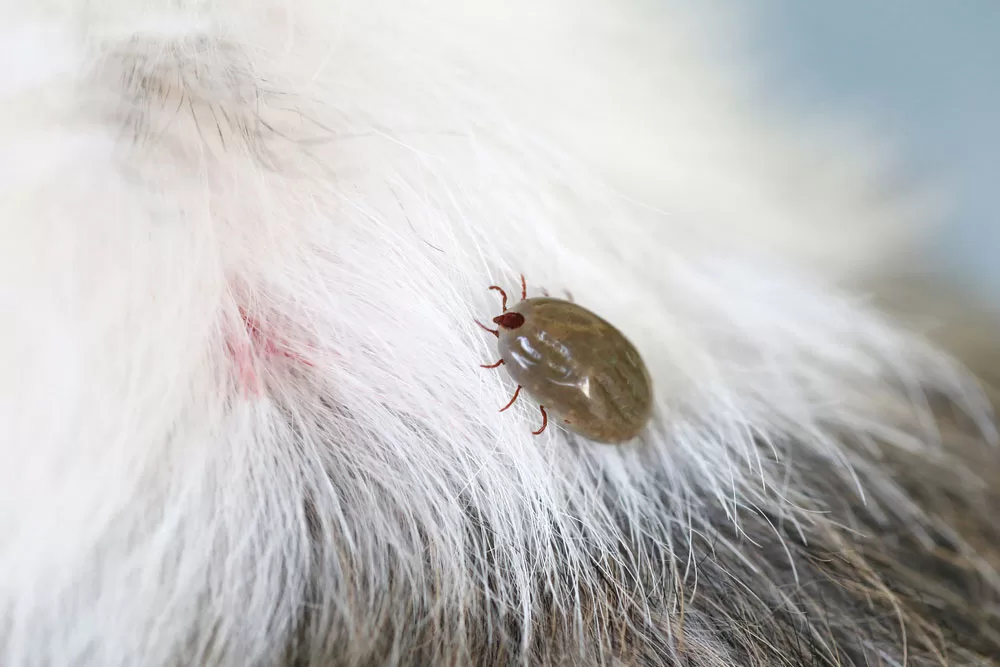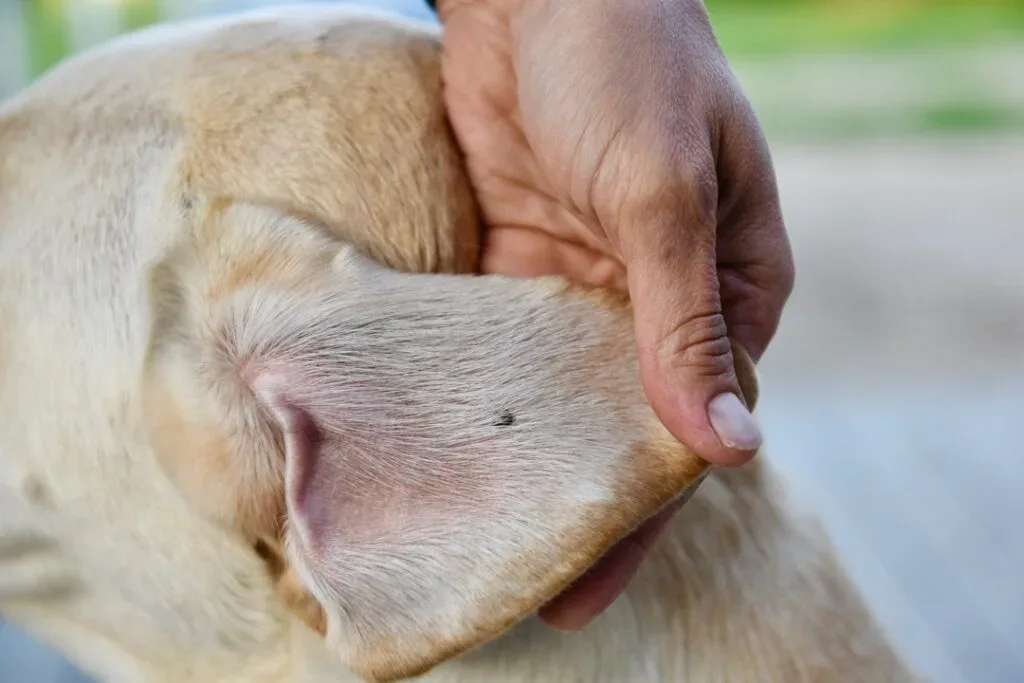Homemade Treatment for Ticks, after detecting tick on your dog’s body, there are a few different treatments that you can try. Some people choose to remove the tick by hand, while others may opt for using a tick remover.
Table of Contents
Ticks on dogs can be a nuisance and even a health risk if not treated. Here’s what you need to know about ticks on dogs and how to identify and treat them.
After detecting tick, If the tick is badly embedded in your dog’s skin, then you may need to take them to the vet for removal.
If you have found a tick on your dog, the first thing to do is remove it as quickly as possible. There are many different ways to do this, but the most common is to use a tick remover spray. If you can’t find the tick right away, try using a match or a needle to remove it from the dog’s skin.
What are ticks and do they multiply?
Ticks are tiny parasites that can attach to your dog’s skin and then feed off of your dog’s blood. Once a tick has been attached to your dog, it can take anywhere from a few hours to a few days for the parasite to develop into an infection.
Ticks are small, arachnid predators that feed on blood. They attach themselves to a host, usually a mammal, by biting into the skin. Once attached, ticks suck blood and spread disease-causing organisms in the process.
Also Read: 5 Simple Tricks to Stop Aggressive Puppy Biting
Ticks can grow explosively in warm climates where there is plenty of animal infected with the parasite that hosts ticks. Tick infestations can also occur in areas with high grass or leaf cover (where ticks can hide), as well as near wooded areas or marshes (where they can find water).
In suburban areas, tick populations may decline because of increased human activity and contact with animals outside.
How to Spot and Remove Ticks from Your Dog’s Fur

Ticks are small, blood-sucking parasites that can transmit a variety of diseases to dogs, including Lyme disease, Rocky Mountain spotted fever, and ehrlichiosis.
Where to Look
Ticks are most commonly found on dogs around the head, neck, ears, and feet. They can also be found on the abdomen, armpits, and groin.
How to Spot Ticks
Ticks are small and often difficult to see, but they can feel like small bumps on your dog’s skin. To check for ticks, run your hands over your dog’s body, paying special attention to the areas listed above.
How to Remove Ticks
If you find a tick on your dog, it is important to remove it immediately. The best way to remove a tick is to use a tick removal tool. These tools are available at most pet stores and veterinary clinics.
To use a tick removal tool, simply place the tool around the tick’s body and twist it gently. This will remove the tick from your dog’s skin. Once the tick is removed, flush it down the toilet or place it in a sealed container and dispose of it properly.
Do not try to squeeze the tick’s body or pull it off with your fingers. This can cause the tick to regurgitate, which can increase the risk of infection.
Preventive Measures
There are a number of things you can do to prevent ticks from getting on your dog in the first place:
- Use a tick-prevention product. There are a variety of tick prevention products available, including topical treatments, oral medications, and collars. Talk to your veterinarian about which product is best for your dog.
- Check your dog for ticks regularly. Especially after spending time outdoors, be sure to check your dog’s body for ticks.
- Avoid tick-infested areas. If possible, avoid taking your dog to areas where ticks are known to be present. If you must take your dog to a tick-infested area, be sure to check them thoroughly for ticks after returning home.
Additional Tips
- Natural tick repellents. There are a number of natural tick repellents available, such as rose geranium oil and tickweed. You can also make your own tick repellent by combining 20 drops of either oil with 2 tablespoons of almond oil. Apply the mixture to your dog’s neck before taking them for a walk.
- Keep your home and yard clean. Remove any tall grass, weeds, and debris from your yard. This will help reduce the number of ticks in your yard.
- Treat your yard with a tick control product. There are a number of tick control products available for use in yards. Talk to your veterinarian about which product is best for your yard.
Important Note: If you find a tick on your dog, it is important to monitor them for any signs of illness. Symptoms of tick-borne diseases can include fever, lethargy, loss of appetite, and lameness. If you notice any of these signs in your dog, please contact your veterinarian immediately.
Best Homemade Treatment after Detecting Tick on Dogs Body
After detecting a tick on your dog’s body, you may want to consider using a homemade treatment. There are several options available, depending on the severity of the infestation and your personal preferences.
One option is to use a fipronil tick spray. This product is effective at controlling ticks and can be used either as a spot-treatment or as a full-body spray. If you’re using it as a spot-treatment, make sure to apply it directly to the tick as soon as you notice it attached.
If you’re using it as a full-body spray, start by spraying the designated area liberally and then walk your dog around that area while applying more spray if needed.
Other Simple Homemade Treatment for Ticks
| Homemade Treatment for Ticks | Procedure |
|---|---|
| Citrus juice (lemon or orange) | Rub freshly squeezed citrus juice onto your dog’s fur, paying special attention to the areas where ticks are most likely to be found, such as the head, neck, ears, and feet. Avoid getting the juice in your dog’s eyes and nose. |
| Essential oils (rose geranium or tickweed) | Mix 20 drops of essential oil with 2 tablespoons of almond oil. Apply the mixture to your dog’s neck before taking them for a walk. Be sure to avoid getting the essential oil in your dog’s eyes and nose. |
| Dish soap | Apply a generous amount of dish soap to your dog’s fur and let it sit for 15-30 minutes. Then, rinse your dog thoroughly with water. Be careful not to get the soap in your dog’s eyes and nose. |
| Apple cider vinegar and salt | Mix equal parts apple cider vinegar and salt. Dip a cotton ball in the mixture and apply it to the tick. The tick should die within a few minutes. Once the tick is dead, remove it with a tick removal tool. |
| Borax | Sprinkle borax on your carpets and furniture, paying special attention to areas where your dog spends a lot of time. Let the borax sit for a few days, then vacuum it up thoroughly. Be sure to keep your dog away from the borax while it is sitting. |
Precautions while spraying on dog’s body
- Use gloves while spraying
- Never allow your dog to lick the solution after spraying
- In case of small and nervous puppies, spray the solution on your gloves and rub gently around the ticks area
- Follow the same procedure while applying on face
- Solution should not get into eyes, nose and mouth
Second option if you have found a tick on your dog’s body, there are a few home remedies you can try. Apple cider vinegar is one of the most popular, and it is believed to remove ticks by dehydrating them. You can also make a mixture of white vinegar and water, which is said to be effective in killing ticks as well.
Vinegar has been used for centuries to cleanse and remove items from the home, such as dust mites. With this in mind, it is not surprising that vinegar can be used as a natural tick remover on dogs.
Simply mix 1 part white vinegar to 3 parts water and spray the solution onto your dog’s skin where ticks are attached.
Let the solution sit for a few minutes before rinsing off and be sure to repeat this process if necessary.
What kills ticks on dogs instantly home remedies?
Ticks on dogs can be easily killed with a few simple home remedies.
- One effective way to do this is to mix 20 drops of eucalyptus oil with distilled water in a spray bottle, then spray this solution onto the ticks
- Use bleach to get rid of ticks on dogs body
- Finally, use rubbing alcohol to clean any areas that may have been sprayed.
Can Dettol kill ticks on dogs?
There is no definitive proven answer for this but some people who used believe that Dettol kills ticks on dogs. It is a household cleaner that can be diluted in water to make a spray or used as a wipes. Dettol is effective against most ticks, including the common brown dog tick, American dog tick and wood tick.
Care should be taken when using this product on puppies because it can cause irritation to their eyes and skin.
Here is a Detailed guide on it: Can Dettol Kill Ticks on Dogs? A Complete Guide
Conclusion
It is important to remember to take your dog to the veterinarian if they exhibit any unusual signs after being bitten by a tick. If you are able to remove the tick yourself, doing so as quickly and cleanly as possible is the best way to prevent any potential illness or infection. If you can’t remove the tick, it is best to seek help from a veterinarian.

